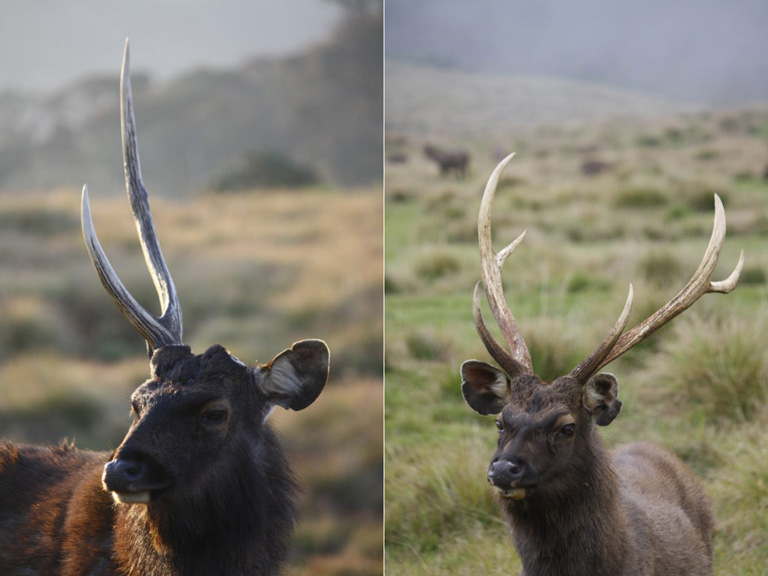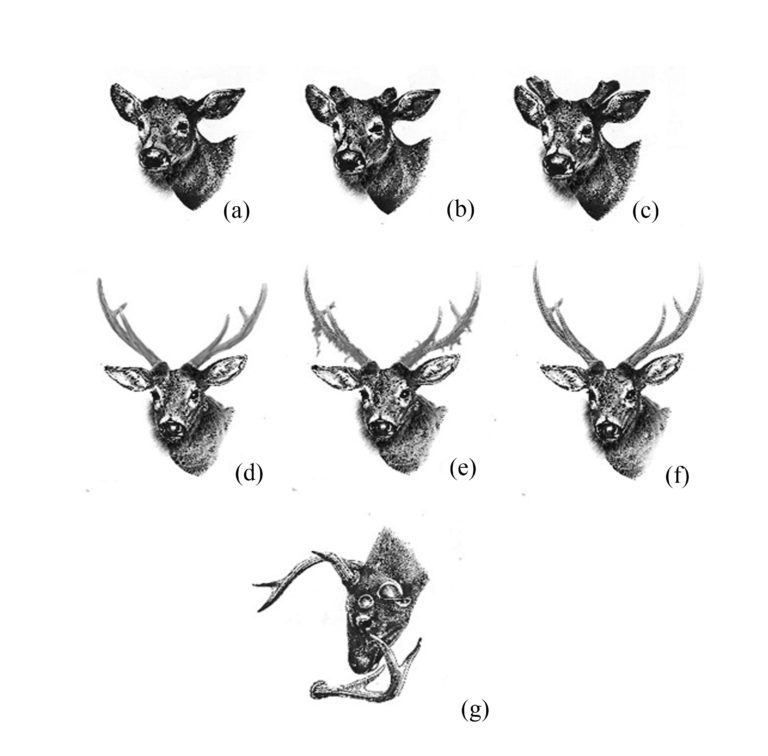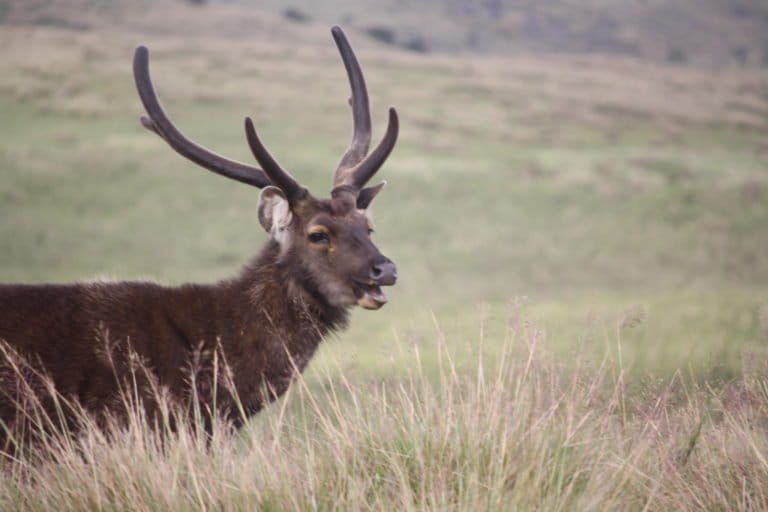- The sambar is the most widespread deer species in the Asian region, but there are very few studies on their reproduction and antler development cycles.
- A new Sri Lankan study focusing on testosterone levels in sambar droppings sheds light on the link between hormone levels in males with the development cycle of their antlers, though it doesn’t show clear seasonality like in deer in temperate regions.
- The sambar population in Horton Plains National Park in central Sri Lanka is unique in the formation of herds, which can grow to up to 20 individuals, in contrast to the much smaller herds found elsewhere.
- Sambar deer are a flagship species for the conservation of Horton Plains National Park, a unique habitat of montane wet grassland.
HORTON PLAINS, Sri Lanka — Studying animals in their wild habitat can get quite intrusive. And when that animal is a male sambar deer (Rusa unicolor) with fully grown antlers — the king of the Sri Lankan grassland — every movement comes under scrutiny. Including bowel movements.
Deer droppings were the focus of a recent study by researchers staking out Horton Plains National Park (HPNP), as they looked for hormonal clues to help them understand the cyclical growth of sambar antlers. The Sri Lankan subspecies of sambar (R. u. unicolor) has the largest antlers of the species, which go through an annual cycle of growth, branching, hardening, and eventually falling off.
“During our observations, we found seven antler growth stages of sambar deer in the Horton Plains that is directly linked to their hormone levels,” Sandun J. Perera, corresponding author of the study and a field biologist at Sabaragamuwa University, told Mongabay.
The stage when the antlers hardened coincide with the start of the period rutting or breeding season, when the males begin jousting with each other. (Female sambar, like nearly all other deer species, don’t grow antlers.) The hard antlers were recorded throughout the breeding season, lasting for about four to five months, generally from September to January.
After that, the animals go through a “casting” stage, when the antlers, having served their purpose, are cast off. “This cycle is distinctly clear with sambars aged between three to five years, so we only selected fecal matter from that age group,” Perera said.

“By analyzing the testosterone hormones in the [fecal] specimen, we discovered that the sambars in the ‘hard antler’ stage have the highest hormone concentrations … and the sudden drop triggers antler casting.”
The findings differ from that of deer species in temperate regions, which show clear seasonality in their antler development. The Horton Plains sambars don’t share this trait. “This means that Horton Plains have male sambars in different stages of antlers development throughout the year, though there are higher percentages of some antler stages in some seasons,” Perera said.

Poop scooping
To collect the droppings from which to measure fecal hormone levels, the researchers had to wait for the observed sambar to do its business, then go in quickly and collect the fresh pile. They stashed each sample in an ice box while on their collection rounds.
Danushka Weerasekera, a Ph.D. student in ecology, wildlife biology and conservation from the postgraduate Institute of Science at the University of Peradeniya, was responsible for carrying out much of the field research. His team collected fecal samples from 10 sambars in each of the seven antler-growing stages.
“To minimize errors, we collected two samples from each sambar and summed up the average which increased the collected samples to a total of 140,” Weerasekera said.
Each sample was cataloged with a photo of the particular sambar and sent to a laboratory before the end of the day to prevent them from getting contaminated.

The samples were then processed using a technique called radio-immunoassay (RIA) to measure the levels of the hormone testosterone. This marked the first time that fecal hormone levels were monitored using RIA to study antler development in wild sambar deer populations in the region.
The sambar population found in Horton Plains National Park in Sri Lanka’s central highlands are unique. “These sambars form larger herds consisting of 10-20 individuals and sometimes goes beyond 30 and above. But a typical dry zone sambar herd consists of about four individuals,” Perera said.

In forests, sambars do more browsing and feed on leaves, but in Horton Plains they become grazers feeding on grass. Perera said it’s important to monitor the sambar population at Horton Plains as the deer is a flagship species and important in developing conservation plans.
Horton Plains is an important grassland and a threatened habitat in Sri Lanka. “Sambar deer can be the flagship species and help inform conservation needs. This type of study can increase our understanding of the species,” co-author K.B. Ranawana told Monabay.
Citation:
Weerasekera, D. S., Perera, S. J., Nanayakkara, D. K. K., Herath, H. M. S. S., Rathnasekara, A. N. L., & Ranawana K. B. (2020). The antler cycle and fecal testosterone of male sambar deer Rusa unicolor unicolor at the Horton Plains National Park in Sri Lanka. Hindawi BioMed Research International, 2020, 1-7. doi:10.1155/2020/6903407
Banner image of two male sambar deer jousting with their antlers, courtesy of Harsha Matarage.
